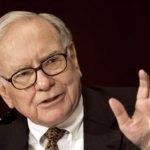The other shoe has fallen in China, with the People?s Bank of China?s move to cut bank reserve requirements by 50 basis points, the second time since November. The relaxation makes the Middle Kingdom a certified, card carrying member of the international quantitative easing club.? It also confirms the country?s time tested preference for announcing major economic policy changes on American holidays. Watch that calendar!
First, a brief history lesson. China?s central bank uses the reserve rate as a means to control domestic lending without have to resort to changing interest rates. A low reserve rate means that the banks can leverage up and lend with reckless abandon, thus stimulating the economy. A high rate clips lenders? wings and slams on the brakes for the economy.
The authorities stated raising this key benchmark all the way back in 2006, when the reserve rate was only 8% and double digit GDP growth rates ignited inflation fears. The central bank raised the requirement until it reached an all-time high of 21.5% in June, 2011.
This means that banks must retain $21.50 for every $100 in leans they extend, giving them a leverage ratio of 4.6:1, making them the least leveraged banks in the world. By comparison, American banks were leveraged up to 100:1 at the top of the real estate bubble, and are thought to be running 12:1 leverage now, nearly triple China?s current rate.
The important thing to note here is not the absolute 50 basis point change in reserve requirements, but the confirmation of the new direction. The PBC only changes direction in reserve requirements a few times a decade, and when it does, it is a monumental, sea-changing occasion.
It tells us that further cuts are in the works, that Chinese banks are being encouraged to increase and not decrease lending, and that this is good for asset prices everywhere, especially copper.

China Fires the Starting Gun



